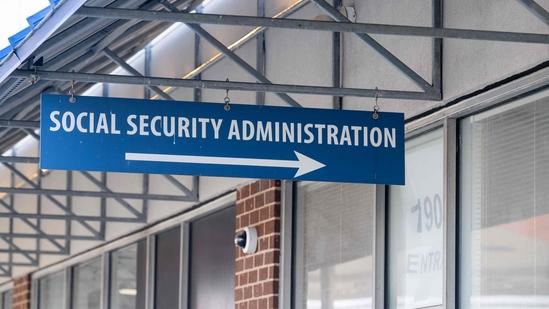Social Security Processing Delays Intensify Amid Changing Priorities
Growing Backlogs Spark Concern Among Social Security Employees
Staff members at the Social Security Administration (SSA) are raising alarms over an expanding backlog of benefit applications, cautioning that these delays could extend wait times for millions of Americans seeking assistance. The combination of a surge in claims and persistent staffing shortages has overwhelmed the agency’s ability to process requests promptly. In response, the SSA has implemented revised prioritization protocols that emphasize urgent cases first. However, frontline employees warn that this strategy may inadvertently prolong processing for less critical claims, impacting a wide spectrum of beneficiaries.
Key factors driving the backlog include:
- Significant increase in applications for retirement and disability benefits
- Ongoing workforce reductions and hiring freezes over recent years
- Greater complexity in claim assessments requiring thorough review
- Policy adjustments prioritizing expedited handling of COVID-19-related and severe disability claims
| Claim Type | Average Processing Duration (Months) | Priority Status |
|---|---|---|
| Disability Benefits | 9 | High |
| Retirement Benefits | 5 | Medium |
| Supplemental Security Income (SSI) | 7 | High |
| Survivor Benefits | 4 | Priority |
While focusing on urgent claims addresses immediate needs, it risks delaying routine cases, potentially postponing benefits for many applicants. Balancing urgency with equitable service remains a significant challenge for SSA offices nationwide.
Impact of Revised Prioritization on Social Security Claim Timelines
The SSA‚Äôs recent restructuring of its claim prioritization system has generated concern among both employees and beneficiaries. The new framework accelerates processing for high-priority cases‚ÄĒsuch as those involving critical disabilities or terminal illnesses‚ÄĒwhile standard retirement and survivor claims may face lengthier delays. This redistribution of resources aims to provide quicker relief to those in dire circumstances but has unintentionally created bottlenecks for routine claims.
Claims are now segmented into these categories:
- High Priority: Disability claims with confirmed medical urgency and expedited processing for terminally ill applicants.
- Medium Priority: Retirement applications with special conditions, such as early retirement exceptions.
- Standard Priority: Typical retirement and survivor benefit claims without urgent qualifiers.
| Claim Category | Processing Time Before Update | Processing Time After Update |
|---|---|---|
| Disability Benefits | 3 months | 2 months |
| Retirement Benefits | 4 weeks | 8+ weeks |
| Survivor Benefits | 4 weeks | 6 to 10 weeks |
Although these adjustments aim to speed up aid for those in urgent need, they also mean that millions applying for standard benefits should anticipate longer waiting periods. Experts advise maintaining regular contact with SSA representatives to track claim progress and set realistic expectations.
Understanding the Effects of Priority Changes on Your Social Security Claim
The SSA‚Äôs updated prioritization approach may lead to extended delays for applicants pursuing routine retirement or disability benefits. While urgent cases‚ÄĒsuch as those involving terminal illness or severe financial hardship‚ÄĒreceive expedited processing, many standard claims could experience lengthier evaluation times. This shift may increase uncertainty and anxiety for applicants as their cases are deprioritized.
Applicants should consider the following potential consequences:
- Longer processing durations for routine claims
- Possible postponements in benefit commencement dates
- Heightened importance of proactive communication with SSA offices
| Priority Level | Typical Processing Timeframe | Example Situations |
|---|---|---|
| High Priority | 2 to 4 weeks | Terminal illness, critical disability |
| Standard Priority | 4 to 6 months | Regular retirement, general disability claims |
| Low Priority | 6 months or longer | Incomplete or missing documentation |
Effective Approaches to Navigate Delays and Protect Your Social Security Benefits
Specialists recommend that claimants take a proactive stance to lessen the impact of processing slowdowns. Consistently checking your claim status online enables prompt responses to requests for additional information, helping to avoid unnecessary delays. Building a direct line of communication with your assigned caseworker or local SSA office can also provide timely updates and potentially accelerate resolution of outstanding issues.
- Gather and submit all required documents in advance to prevent delays caused by incomplete applications.
- Consider filing claims during off-peak periods when processing times are generally shorter.
- Stay informed about SSA policy updates to understand how changes may influence your benefits.
| Claim Type | Estimated Processing Duration | Recommended Action |
|---|---|---|
| Disability Claims | 4 to 6 months | Provide thorough medical documentation upfront |
| Retirement Benefits | 2 to 3 months | Apply early, ideally 3 to 4 months before eligibility |
| Supplemental Security Income (SSI) | 3 to 5 months | Double-check all financial details before submission |
Conclusion: Adapting to the Evolving Social Security Environment
As the Social Security Administration adjusts to shifting demands and limited resources, beneficiaries should brace for longer wait times and potential delays in claim processing. While prioritizing urgent cases is essential to meet critical needs, it inevitably results in extended timelines for many standard benefit applicants. Staying well-informed, maintaining open communication with SSA personnel, and submitting complete, accurate applications can help ease these challenges and facilitate smoother access to vital benefits during this transitional phase.




